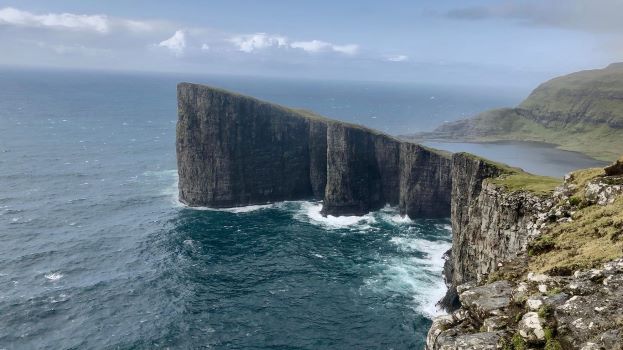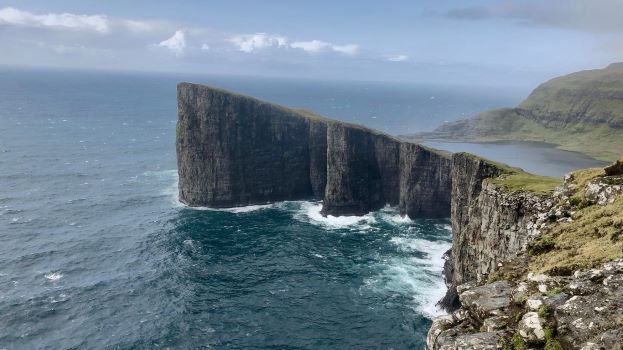Monday, November 25, 2024

The Vikings, known for their adventurous spirit, traveled extensively between the late eighth century and around 1050 CE. From their homelands in Scandinavia, these seafaring warriors explored vast territories across the Atlantic, reaching as far as Newfoundland, Labrador, and Greenland. They also made significant inroads into the Mediterranean and continental Eurasia, establishing settlements and leaving an indelible mark on the regions they touched.
Among the areas the Vikings are known to have settled are the Faroe Islands, an archipelago consisting of 18 islands located in the North Atlantic. While these islands had been inhabited before, with evidence suggesting they were home to Celtic monks or people from the British Isles since approximately 300 CE, the Vikings arrived in the late 9th century. According to the Færeyinga Saga, which was written around 1200 CE, the Viking chief Grímur Kamban is credited with leading the settlement of the Faroe Islands between 872 and 930 CE.
Genetic Research Unveils Viking Origins
The question of where Grímur and his Viking settlers came from has intrigued scholars for centuries. Recent genetic research, however, has provided significant insights into the origins of the Viking settlers of the Faroe Islands. Researchers, including Dr. Allison Mann from the University of Wyoming and Dr. Eyðfinn Magnussen from the University of the Faroe Islands, have conducted studies on the Y-chromosome genotypes of men from the Faroese islands of Borðoy, Streymoy, and Suðuroy. This research has helped reconstruct the origins of the Viking founders, revealing a diverse mix of Scandinavian populations.
The study involved analyzing the genotype at 12 short tandem repeat (STR) loci on the Y-chromosome of 139 men from the Faroe Islands. The genetic data was then compared with that of 412 men from Norway, Sweden, Denmark, Iceland, and Ireland. This comparison allowed the researchers to trace the Viking ancestry of the Faroese people, ultimately revealing that the settlers came from a range of Scandinavian backgrounds.
Genetic Differences Between the Faroese and Icelandic Settlers
The research also revealed distinct genetic signatures between the Faroese and Icelandic settlers, suggesting that these two islands were colonized by separate Viking groups. While both the Faroe Islands and Iceland were settled by Norse people, their genetic make-up differed significantly. The genetic variation found in the Faroese population closely resembled that of broader Scandinavian groups, while the Icelandic population exhibited a more distinct genetic profile. This discovery suggests that the Viking expansion into the North Atlantic was more complex than previously thought.
The study also uncovered evidence of a “founder effect” in the Faroese and Icelandic populations, which occurs when a small group of settlers establish a new population, leading to a reduction in genetic diversity. Despite the close geographical proximity of the two islands, the genetic differences indicate that there was little interbreeding between the two groups of settlers after the initial colonization. The distinct genetic signatures of the Faroese and Icelandic populations have persisted to this day, shedding new light on the complexity of Viking migration.
The Impact on Viking History and Global Travel
The findings from this research offer a more nuanced understanding of Viking expansion and settlement patterns in the North Atlantic. Rather than a homogenous Viking population migrating to these islands, the research shows that there were multiple waves of settlers, each with their own distinct genetic legacies. This new insight challenges long-held assumptions about Viking colonization and settlement, offering a fresh perspective on Viking history.
For travelers and history enthusiasts, this research opens up new opportunities to explore the rich cultural heritage of the Faroe Islands and Iceland. With the growing interest in Viking history and culture, these islands are likely to see a surge in visitors seeking to connect with the past and uncover the stories of the Viking explorers. The discovery of genetic diversity among the Viking settlers will likely attract tourists interested in understanding the complexity of Viking exploration and settlement, adding depth to the cultural and historical experiences available to travelers.
As the travel industry continues to evolve, this kind of research will play a crucial role in shaping tourism strategies for destinations like the Faroe Islands and Iceland. By highlighting the unique and diverse legacies of the Viking settlers, these destinations can attract a broader audience, from history buffs to those seeking adventure and cultural immersion.
A New Chapter in Viking Exploration
The genetic study of Viking settlers in the Faroe Islands and Iceland reveals a more intricate story of exploration, settlement, and cultural exchange than previously understood. By identifying the different genetic groups that contributed to the settlement of these islands, researchers have uncovered a new layer of Viking history that will undoubtedly captivate travelers and historians alike.
For the global travel industry, this research has the potential to create new avenues for tourism, offering visitors the chance to explore the complex and diverse heritage of Viking settlements in the North Atlantic. As interest in Viking history surges, the Faroe Islands and Iceland are poised to become even more attractive destinations for travelers eager to uncover the secrets of the past while experiencing the beauty and adventure these regions have to offer.

